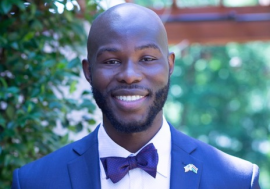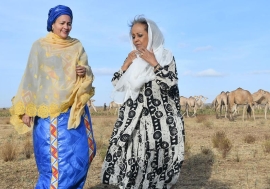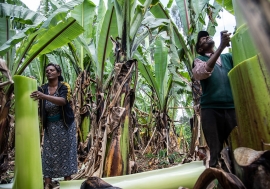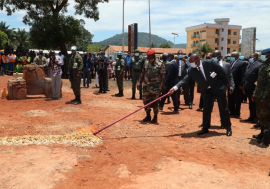Africa Watch
Ethiopia’s ambitious plan to build a $4.2 billion dam in the Benishangul-Gumuz region, 40 kms from its border with Sudan, is expected to provide 6,000 megawatts of electricity, enough for its population plus some excess it can sell to neighbouring countries. Dubbed the Grand Ethiopian Renaissance Dam, it will be Africa’s biggest dam and will depend on water from the 6,700-km Nile River, the world’s longest river.
But Ethiopia must first resolve matters with Egypt, which, along with Sudan, claims the rights to the river following a 1929 agreement. That agreement excluded other countries along the Nile River trajectory, such as Ethiopia, Kenya, Rwanda, Tanzania and Uganda. Egypt fears that the dam will suck up water flows to the country and severely affect its domestic consumption.
About 86% of the Nile River’s water actually originates from Ethiopia, a point the country is underscoring to press its case. In addition, it says that independent experts believe the dam will not affect water flows to Egypt. “There should not be any concerns about a diminished water flow,” Alemayehu Tegenu, Ethiopia’s minister of water and energy, told the Associated Press news agency.
Such assurances have not calmed Egypt’s fears. In early June, then-president Mohammed Morsi directed his foreign and irrigation ministers to get more information from Ethiopia on the dam’s impact on water supply to Egypt. Although President Morsi took a cautious approach, some Egyptian politicians were demanding a stronger response.
Many observers, however, believe that the countries will find a compromise point that will allow Ethiopia to complete the project by July 2017 and also ensure that there is no impact on water flows to Egypt’s population.
Egypt also recently launched a water transportation route that will connect it with nine other East African countries: Democratic Republic of the Congo, Burundi, Ethiopia, Kenya, Rwanda, South Sudan, Sudan, Tanzania and Uganda.
Managing trans-boundary water resources is not always a complicated matter. Since 1994, for example, Angola, Botswana, and Namibia have successfully managed water supplies from the 1,100-km Okavango River that runs through all three countries. They signed an agreement to coordinate water sharing and sustainable use, and even set up the Permanent Okavango River Basin Water Commission to monitor the agreement.
Water is a huge issue in Africa. Up to 300 million Africans still don’t have access to safe drinking water, according to the World Bank. The UN in 2010 declared access to clean water a fundamental human right. Drought in the horn of Africa has caused thousands of deaths, killing 260,000 people in Somalia alone from 2010 to 2012, according to the US-funded Famine Early Warning Systems Network, which provides information on food insecurity.
African countries are making mixed progress towards the Millennium Development Goal drinking water global target, which is to halve by 2015 the number of people without access to clean water. While North Africa has attained up to 92% water coverage, sub-Saharan Africa has only managed 63%, states the 2013 Millennium Development Goals report. The report adds that in sub-Saharan Africa improvements have mainly been in the urban areas, while in the rural areas about 40% of households still don’t have access to safe water.
With 2013 declared by the UN as the International Year of Water Cooperation, African governments, development agencies, citizens and others will have to formulate and implement policies to ensure efficient water management.
US leads initiative to increase energy in Africa
By Jocelyne Sambira
In five years’ time, Africa might see significant improvements in energy, thanks to a US-led initiative called “Power Africa” unveiled by President Barack Obama during a recent three-nation visit to the continent. Students will be able to study after dark, clinics can keep their vaccines refrigerated and businesses can work normal hours.
The US government is leading the charge for Power Africa, helped by some American businesses and by organizations like the African Development Bank.
The initiative is part of a new US policy to focus on the continent’s ability to support itself economically, politically and militarily, according to the Associated Press news agency. Observers say it veers from previous “aid-based” pledges in that its purpose is to encourage American businesses to invest. But these businesses will have to compete with China, Japan and Germany, which already have strong trade ties with Africa.
The US has pledged a $7 billion investment over the next five years, and another $9 billion is expected to come from the private sector, initially targeting six countries: Ethiopia, Ghana, Kenya, Liberia, Nigeria and Tanzania.
Sub-Saharan Africa needs more than $300 billion to achieve universal access to electricity by 2030, according to the International Energy Agency, a body that advises the Organization for Economic Cooperation and Development (OECD) members on energy policy. The US’s current effort is therefore seen by many analysts as a small but important step.
Although Africa is rich in oil, gas, coal and renewable energy resources, electricity is hard to come by, which traps people in poverty. The World Bank found that only 29% of sub-Saharan Africa’s population has access to power. Furthermore, African manufacturing companies experience power outages 56 days per year on average, the bank notes.
Smaller projects like “soccket balls,” soccer balls with built-in generators, will also be part of the Power Africa initiative, Forbes adds. The water-resistant balls capture and store kinetic energy—the kind of energy an object has when it’s in motion—to power LED lights, flashlights or cell phones. The invention, by two female Harvard University graduates, can also help reduce reliance on dangerous kerosene lamps.
Africa’s agribusiness worth US$1 trillion by 2030
By Aissata Haidara
African farmers and the agribusiness sector could create a trillion-dollar food market by 2030 if they could access more capital and electricity, better technology and irrigated land, according to a World Bank report released in March 2013. For this goal to be achieved, governments and business leaders in sub-Saharan Africa must place agriculture and agribusiness at the top of the development and business agenda, the report states.
The International Fund for Agricultural Development (IFAD), the UN agency dedicated to poverty eradication in developing countries, called in 2011 for policy innovations and more investments in agriculture and agribusinesses. Makhtar Diop, the World Bank’s vice-president for the Africa region, says, “The time has come for making African agriculture and agribusiness a catalyst for ending poverty.”
In addition to untapped water resources, Africa has more than half of the world’s fertile and unused land, notes the World Bank, but warns that land allocations for agribusiness have to be carefully carried out. In 2011 the Oakland Institute, a US-based think tank, reported unfair land deals in South Sudan, under which foreign companies bought up fertile and mostly uncultivated land. Such deals did not clarify land tenure and usage, and worse, even threatened the land rights of rural communities.
The World Bank notes that Africa spends $3.5 billion per year on rice importation. With the right incentives many countries could produce enough rice for domestic consumption. Senegalese farmers, for example, experience difficulties in accessing land, capital, finance for irrigation expansion and appropriate crop varieties. They could produce more rice if not held back by these difficulties.
Ten years ago the New Partnership for Africa’s Development (NEPAD) launched the Comprehensive African Agriculture Development Programme (CAADP) “to eliminate hunger and reduce poverty through agriculture” by encouraging African countries to invest at least 10% of their national budgets in agriculture.
Strong leadership and commitment from both public and private sectors is critical to increased agricultural production, many analysts believe. “Transforming agriculture in Africa is not simply about helping Africa; it is essential for ensuring global food security,” maintains the World Bank.





















